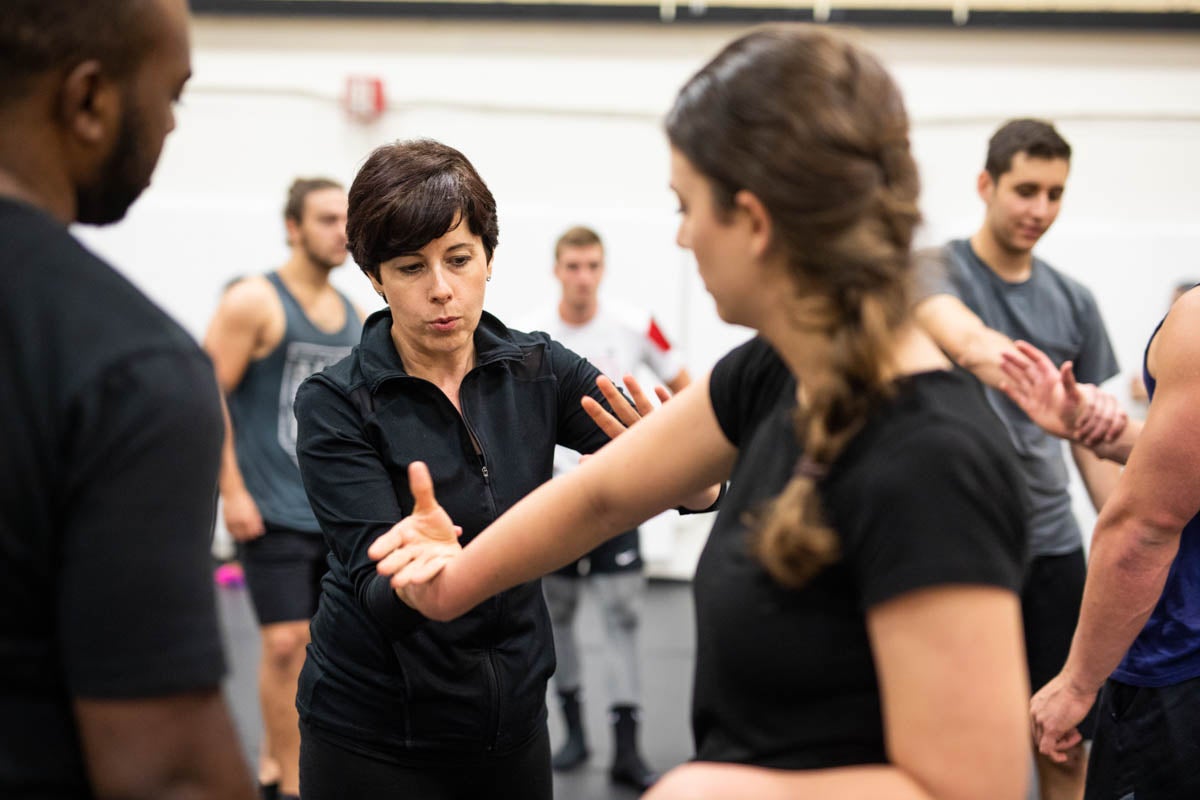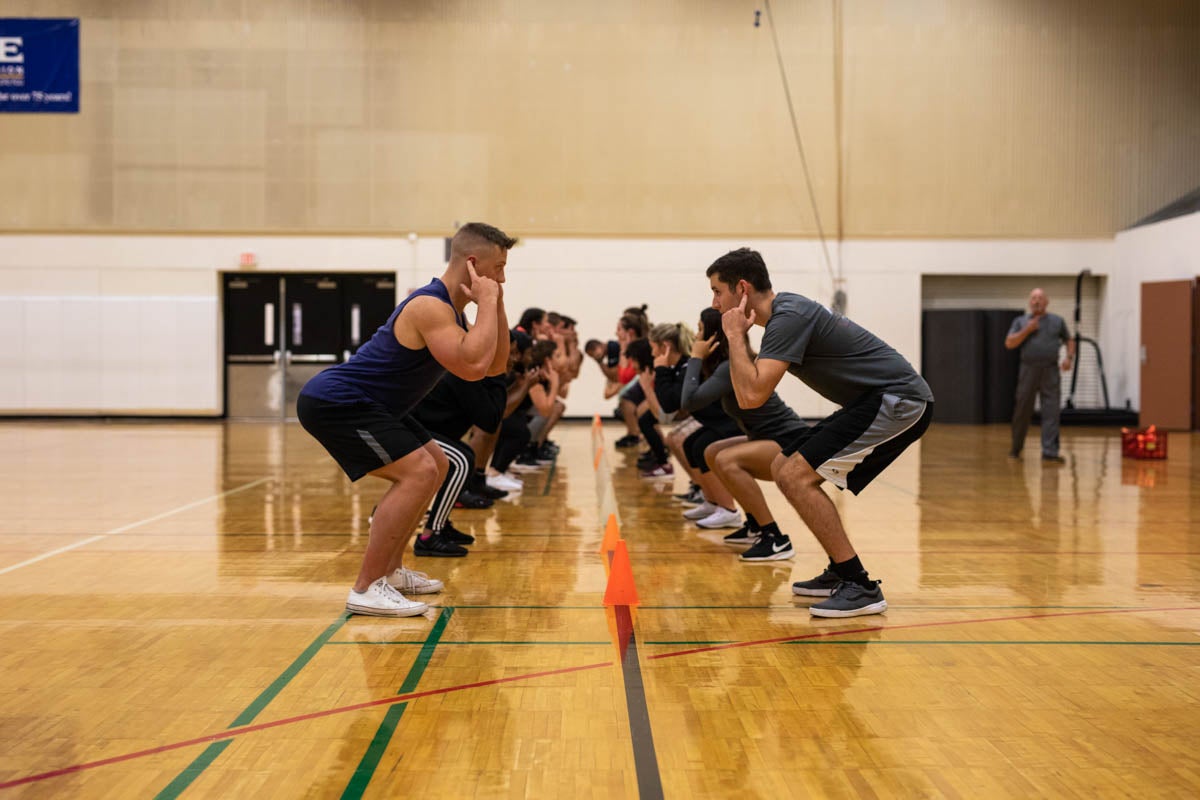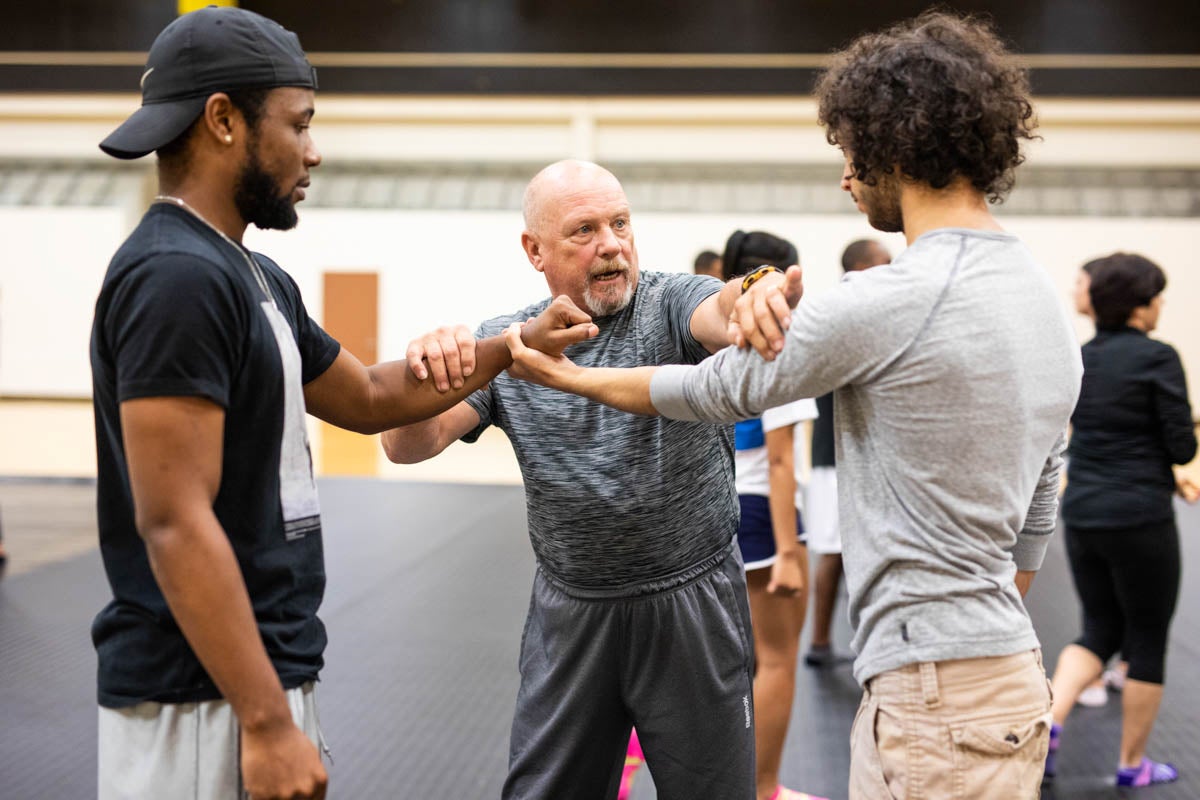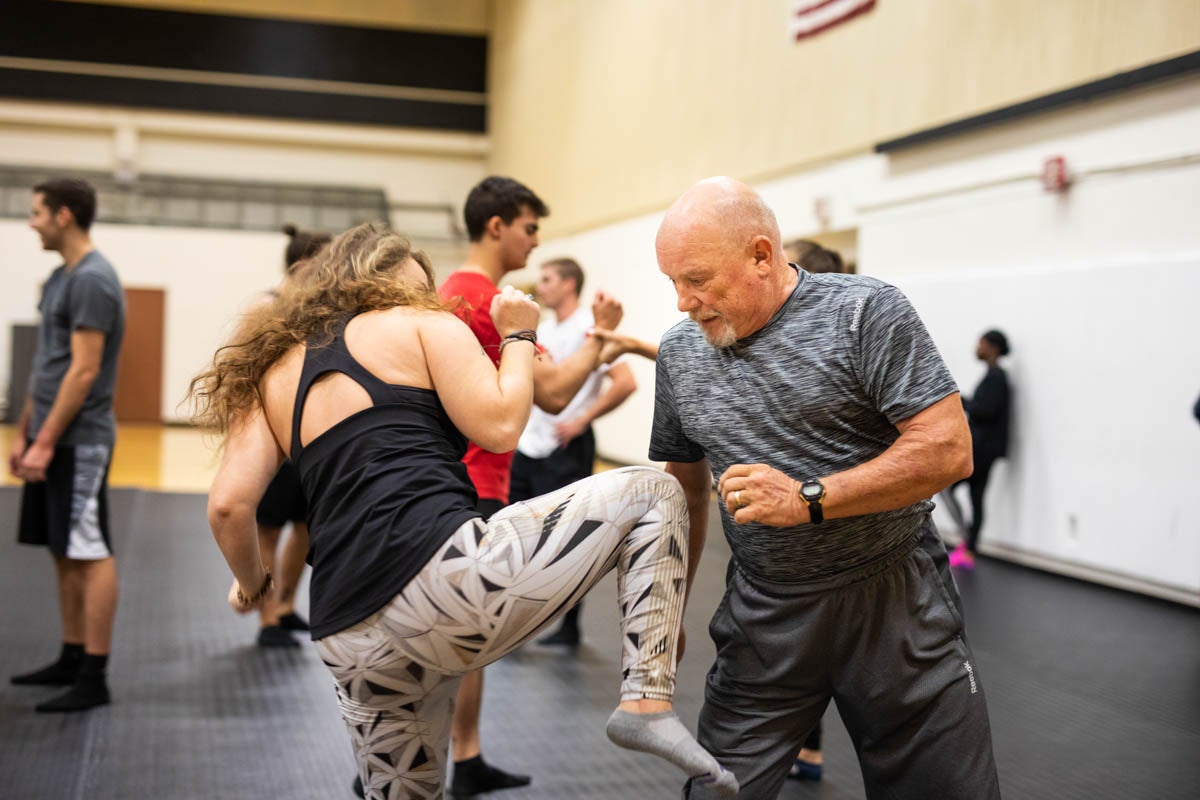Class Name
PEM 2405 Self-Defense for Men and Women
Description
Designed to provide students with self-defense skills.
Instructor
Keri Higby ’09, with technical assistance from Mark Simpson, a retired deputy sheriff of 30 years. Higby earned a degree in criminal justice and now works for the Seminole County Sheriff’s Office.
When is it offered?
Fall, spring and summer semesters.
How many students are in a class?
Fifty, with two sections of the course being offered each semester.
Prerequisites
None
From the Professor
Why do you teach this course?
Keri Higby: I teach this class because I’m extremely passionate about teaching people how to protect themselves, build up their confidence and have a plan of action so they’re not a victim of a violent crime.
How would you describe this course in five words or less?
KH: A must have for all.
What are three things students will learn?
KH: 1. Situational awareness, they get a good understanding of how to increase that.
2. They get a good understanding of body posture, how to stand and not allow someone to approach them as easily.
3. Confidence, I think they come out with more confidence overall.

What are some of the most frequently asked questions about this course?
KH: A lot of people have a preconceived notion that this is going to be an MMA or martial arts class and they’re going to learn how to fight, but that’s not the case at all. So a lot of the questions later on are what-ifs: “What if they pull a knife? What if they pull a gun?”
What’s really important for students to know is the course is about how to become empowered but to also increase your situational awareness beyond the fighting because the fighting is just if you get into the situation. I want you to avoid the situation nine times out of 10 before you have to go at it with a potential attacker. It takes students a few weeks to understand the power lies with them.
This is something most importantly, everybody can do. Whether you’re physically fit, whether you have some type of injury we can work around that. We welcome everyone because everyone can learn how to make smarter choices and increase their awareness.
From the student perspective

How would you describe the classwork?
Shiraz Malul, a senior political science major: The class itself is very week by week. You come in [to the gym] wearing athletic gear and [the instructors] tell you what’s happening this week, the following week and what you should prepare for. Most of the things we would do were in person, so you don’t need a textbook. We would come into class and Keri and Mark would talk to us, we’d do warm-ups and a short activity. Then, we would get into a big circle and partner up [to] learn different techniques and movements on the mat. [The instructors] would work directly with each group, which was nice to have that direct help.
What was the most surprising thing you learned?
SM: Most of self-defense is not the physical part. Most of self-defense is using your voice and being aware. Ten percent of self-defense is actually being physical, the rest is being aware and using your voice. If someone tries to approach you, you should yell “Stay back” or “Stay away from me.” Using your voice loudly is super important because it makes a scene or some kind of chaos so somebody notices.
There aren’t any quizzes for this course, but three organizations visit and give presentations to the class. What was that like?
SM: We had UCFPD and Health Services come into [my class] and what was nice about that was I had the opportunity to be exposed to different organizations on campus and also learn something. My favorite presentation was from Green Dot UCF (a bystander intervention initiative.) They came in and talked about what it meant to be a good, active bystander, [which] is just assessing situations and knowing how to help a friend or stranger out of a situation that might be dangerous.

What made you interested in taking this class?
Joseph Montero ’18, a criminal justice major who took the course as a senior:
At first I wanted a simple class and then it turned out to be: one, entertaining, and two, a superinformative class. So I didn’t go in with a whole lot of expectations but I got so much more out of it and it was 100 percent worth it.
What’s the final physical exam like?
JM: Every scenario was completely different for everyone that took it. There wasn’t really any way to prepare for the final exam other than the fact that you had all semester and this is the knowledge you should have.
Everyone sits on one side of the gym with a screen in the middle so you can’t see what’s going on the other side. The instructors would take one person at a time to the other side and the student would be standing in the middle of the mat with their eyes closed. The point was to get away from Mark, defend yourself with any of the lessons you were taught and go to the exit.
Keri would say “Open your eyes,” and Mark could be anywhere, he could be right next to you or 10 feet away just staring at you. You had to act and react to what he was doing by using your voice, projecting, being loud or just talking to him to see what’s going on. If he was being physical, like grabbing you, use your techniques to try to escape. Trial by fire, for sure.
Why do you think it’s important that this course is available to both men and women?
JM: When people think of self-defense a lot of guys overlook it because they think “Okay I’m a guy I don’t need self-defense.” And a lot of females took the course because it could apply to them more in real life, but I think it’s great knowledge to have as a guy, as well.
You’re not always going to be the biggest dude, you might have to defend yourself in certain situations. Not everything is geared toward females. Even having the title of the course as “Self-Defense for Men and Women” throws it out there that it’s not just for females. So I think that was really good, as well.
Registration for PEM 2405 Self-Defense for Men and Women is closed for Fall 2018 semester, but the UCF Police Department is another great resource for learning self-defense. UCFPD offers free, 2-hour courses to female students during the fall, spring and summer semesters. For more information about UCFPD’s self-defense courses, visit their site.





